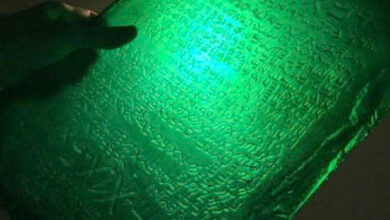Did the James Webb Telescope Just Discover Proof of God’s Existence?
Did the James Webb Telescope Just Discover Proof of God’s Existence?
The James Webb Space Telescope’s September 29th, 2022 images upended our understanding of the universe, revealing ancient galaxies that appeared too complex for their young age, leaving scientists bewildered. Expected to be simple and in their infancy, these galaxies seemed more like cosmic seniors. According to the modern cosmological model, such intricate structures should have taken billions of years to form, but instead, these galaxies seemed to have developed in only a few hundred million years. So, what’s going on?
While scientists are still working on explanations, some, including American philosopher William Craig, have proposed a radical idea: that these galaxies might be evidence of God’s existence. Craig and others argue that the galaxies don’t follow the usual rules of evolution, suggesting instead they were created in their complex form. At first, this sounds preposterous, but what if scientific findings are pointing to a higher power?
Our understanding of the universe is complicated by phenomena like dark matter and dark energy, which make up 95% of the universe but remain theoretical. For example, scientists have spent years searching for dark matter particles but haven’t found solid evidence for them. Meanwhile, dark energy—the mysterious force driving galaxies apart at accelerating speeds—continues to baffle experts.
One widely known argument in cosmology is the “cause and effect” principle: everything must have a cause. If the universe came from a previous state, what caused the Big Bang? Some believe it was a divine force—God. Interestingly, many ancient cultures, from Indigenous Australians to Hindus and even in the Bible, speak of the universe’s creation through sound or vibration. These ancient beliefs parallel modern scientific ideas, where everything in the universe resonates at a specific frequency.
In fact, modern physics has proven that resonance governs much of the universe. Everything, from light to sound to magnetic fields, is based on wave vibrations. This aligns with ancient beliefs about divine creation through sound, which some suggest might be the “language of God.”
One of the most mind-boggling examples of resonance in nature comes from the mathematical concept of fractals. These infinitely repeating patterns, discovered by Benoit B. Mandelbrot, appear in nature—such as in galaxy clusters and neural networks. Fractals might even hint at a divine order in the universe.
American astrophysicist Jason Lyall connects these fractals to his belief in a divine creator. In his book Fractals: The Secret Code of Creation, Lyall argues that fractals are evidence of a perfectly designed universe, created by a perfect divine entity. His research shows that religious scriptures, when viewed through the lens of science, are compatible with modern theories of creation.
While this all might sound like science fiction, the U.S. government took the idea of connecting with divine forces seriously in the 1970s. The CIA declassified documents revealing a project called the “Gateway Process,” which explored how humans could transcend the physical world through altered states of consciousness, potentially connecting with a higher power. In 2003, the full report confirmed that God, or “the Absolute,” is a conscious energy without boundaries, much like how the Bible describes God.
Whether or not you believe in God, these discoveries invite contemplation about the mysteries of existence. The very essence of life and the universe might not be as random as we thought. Perhaps the ultimate resonance—the one that ties everything together—is a higher force at work. The mysteries of the cosmos could be far more profound than we imagine.




